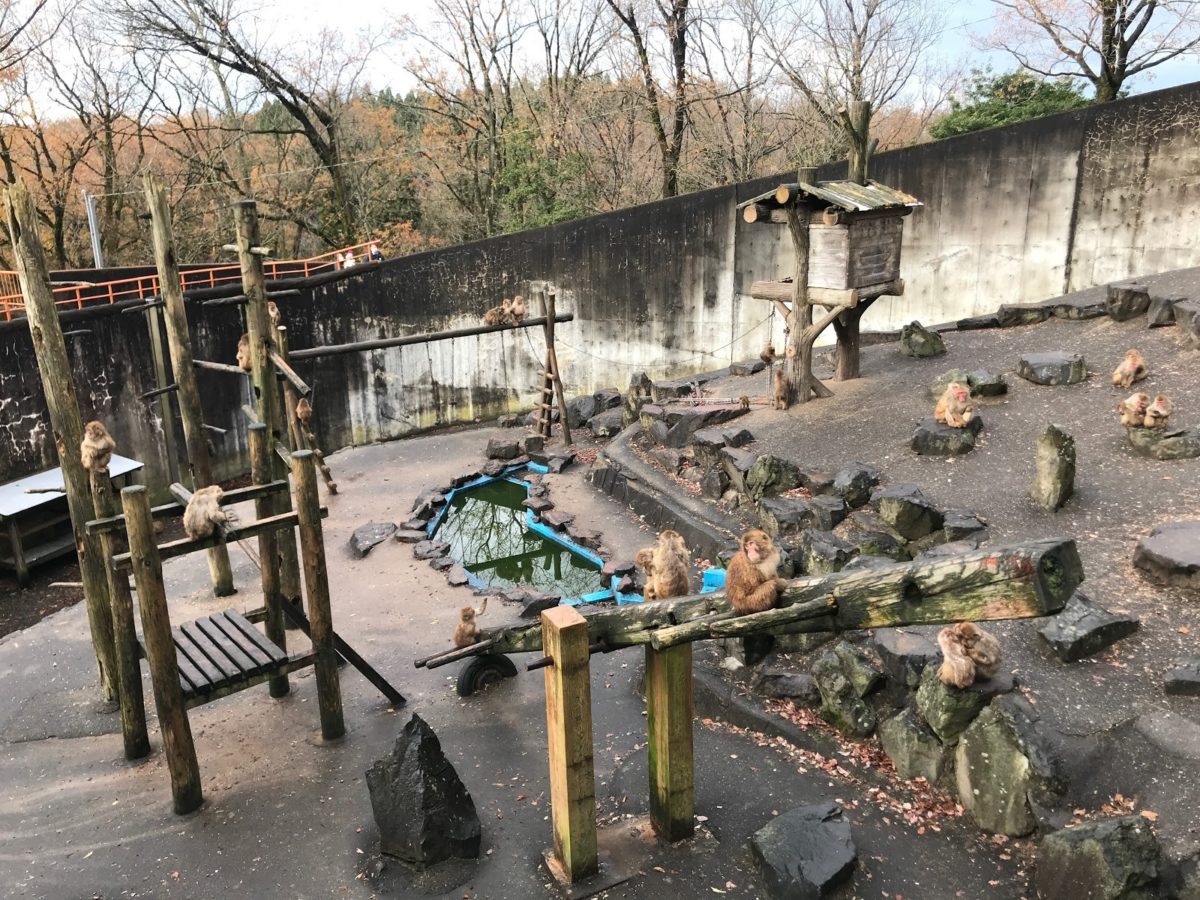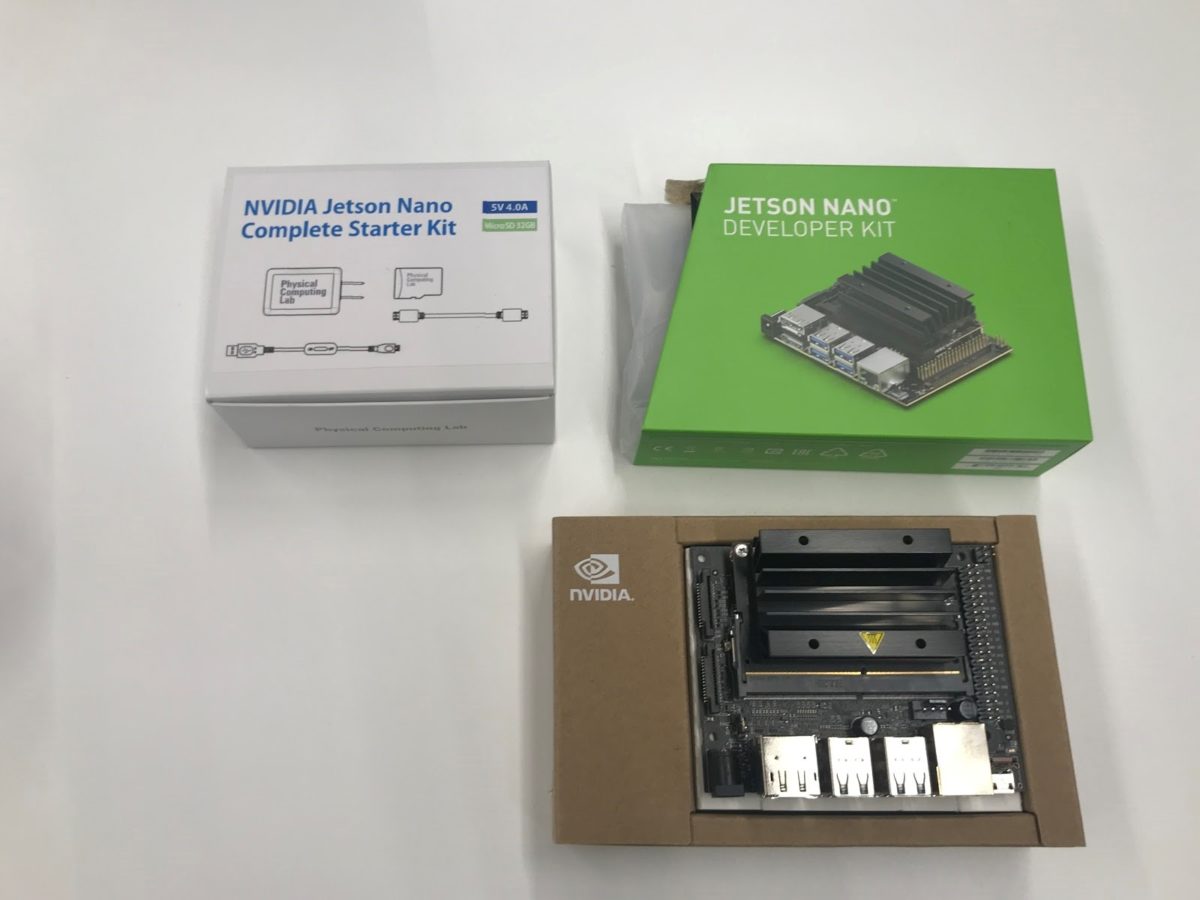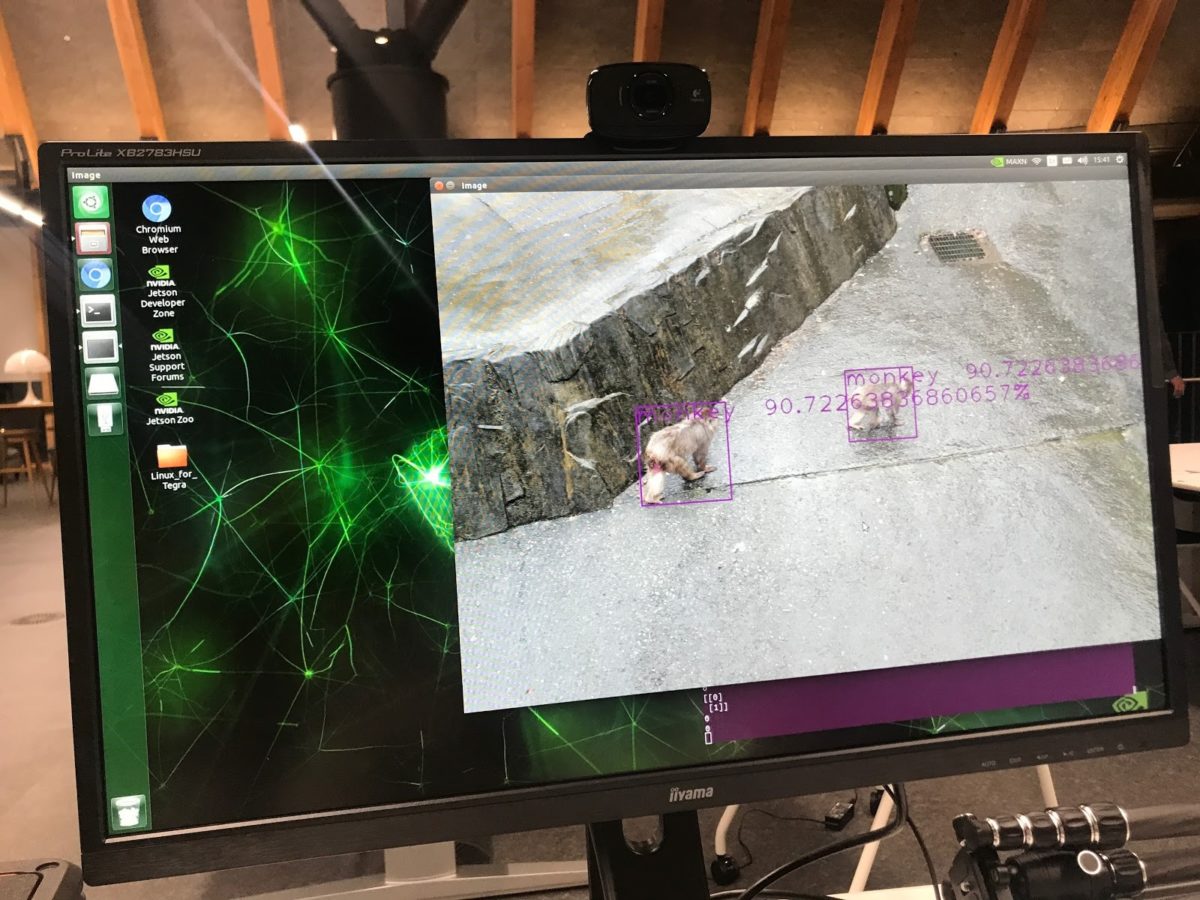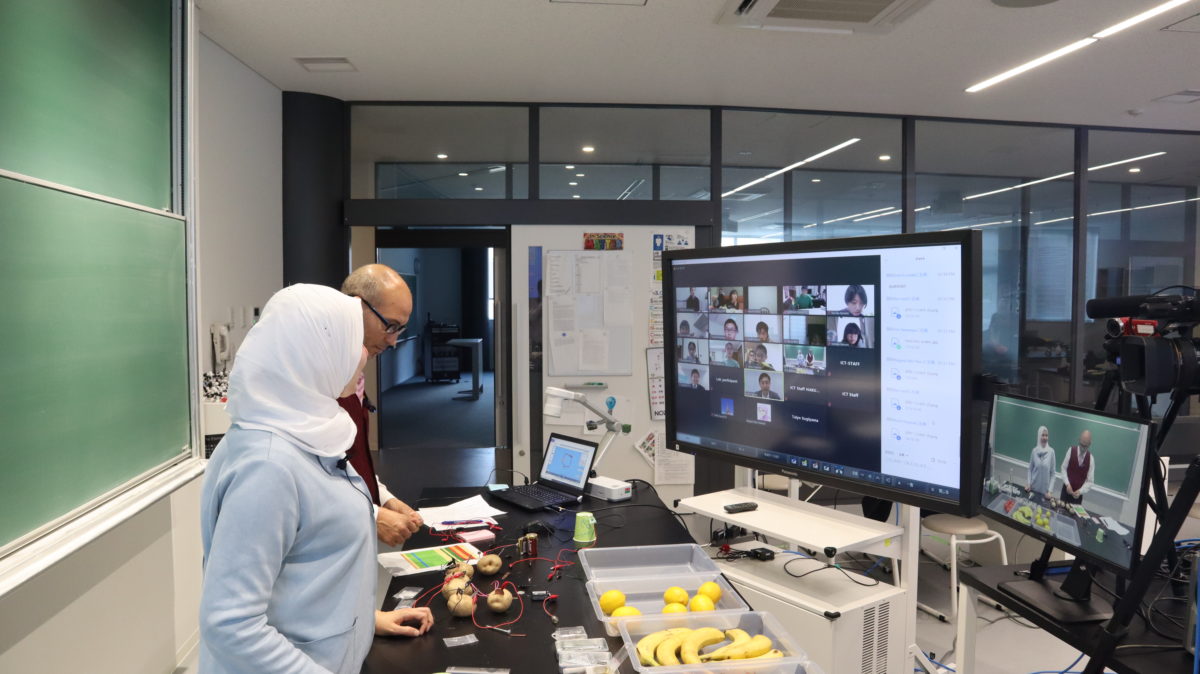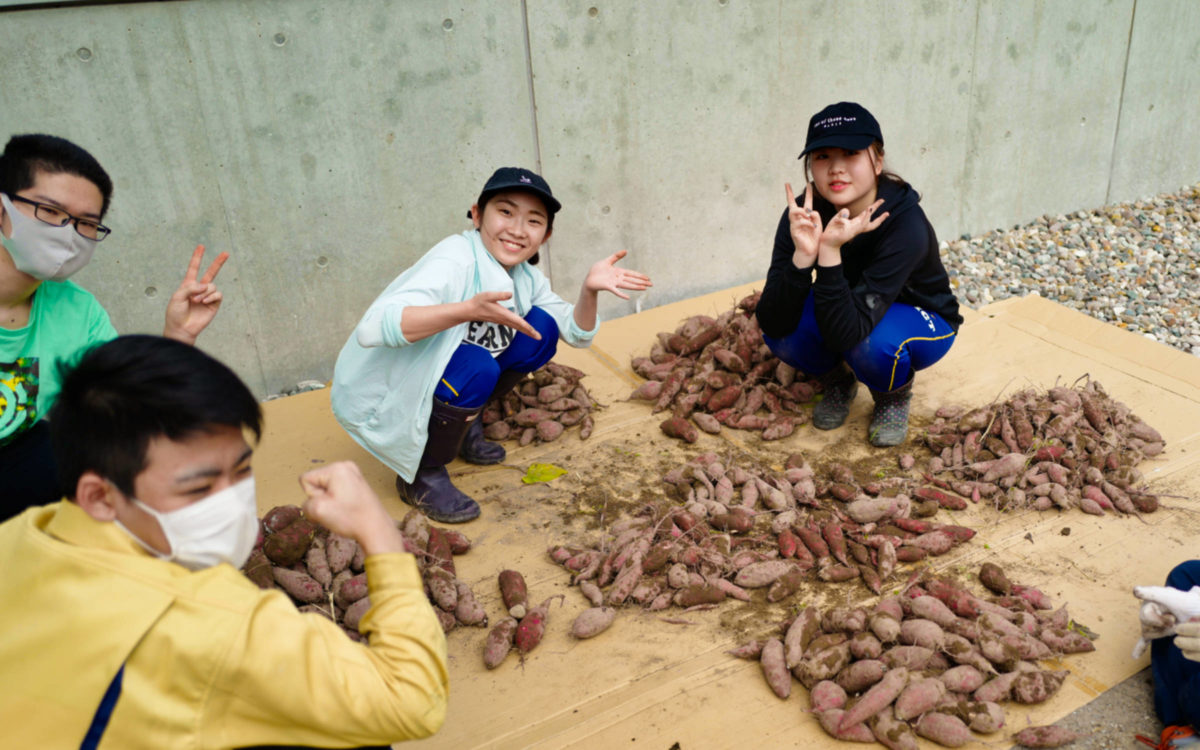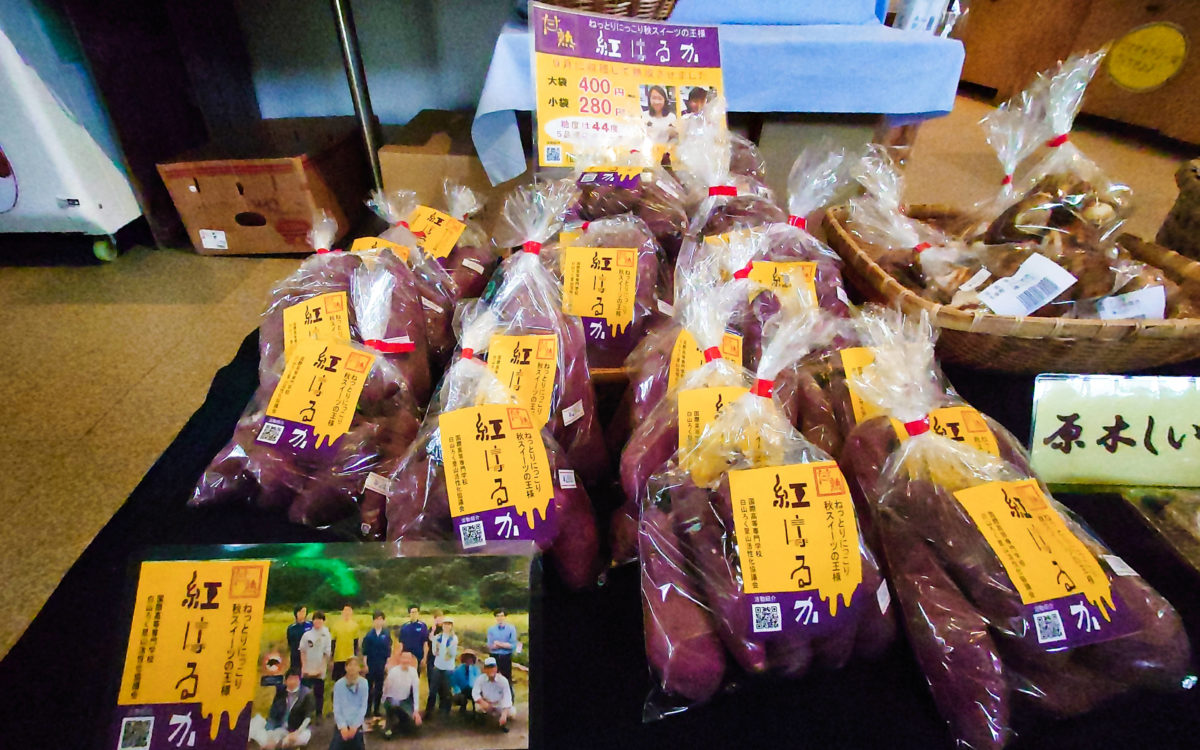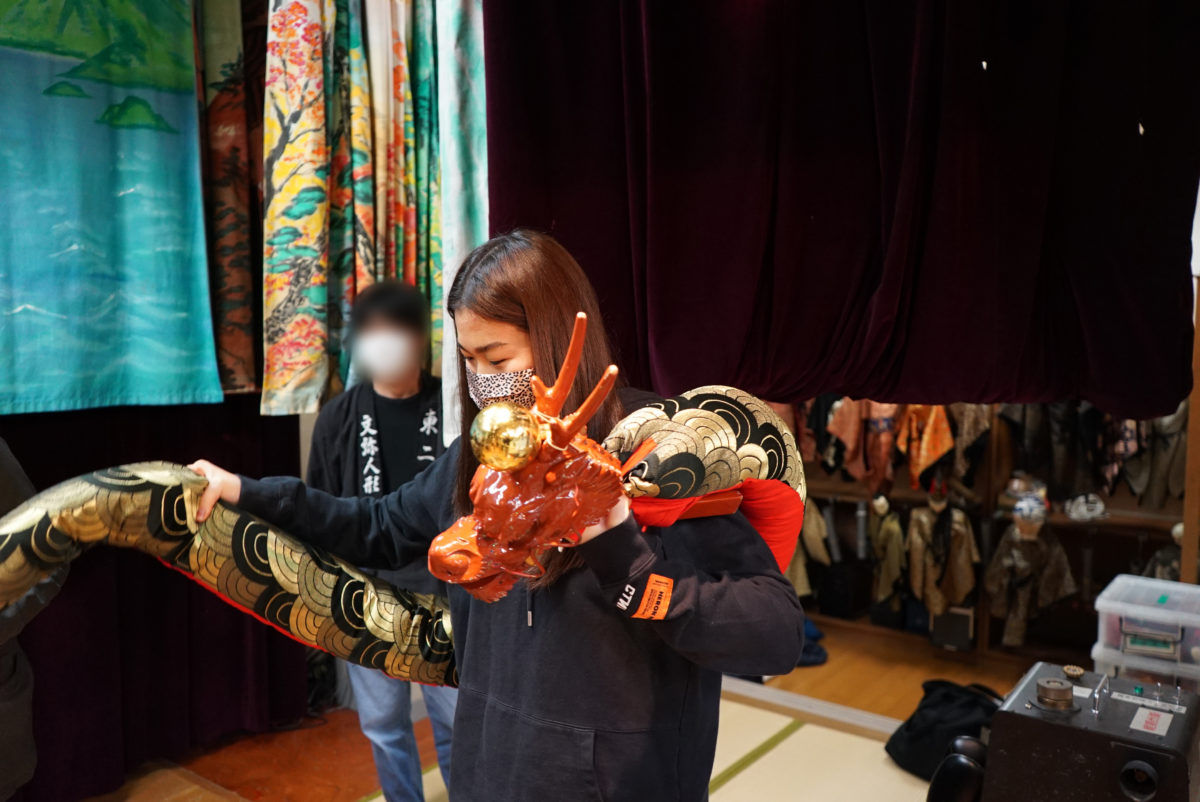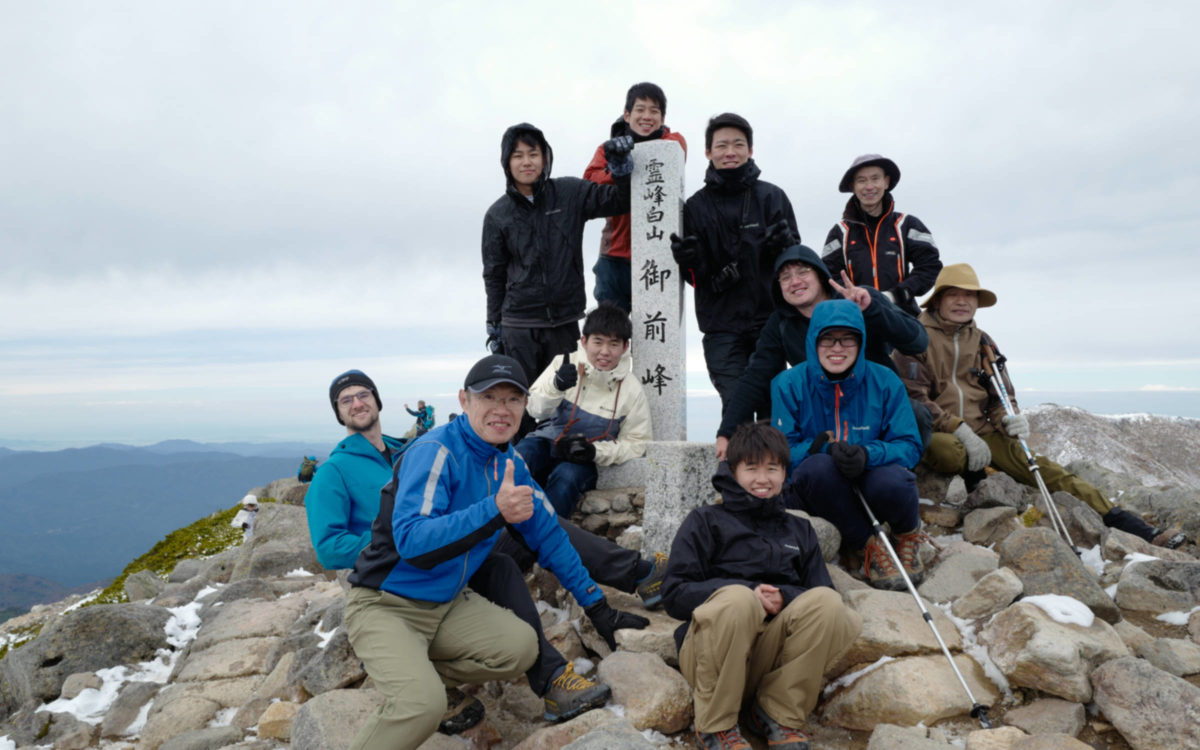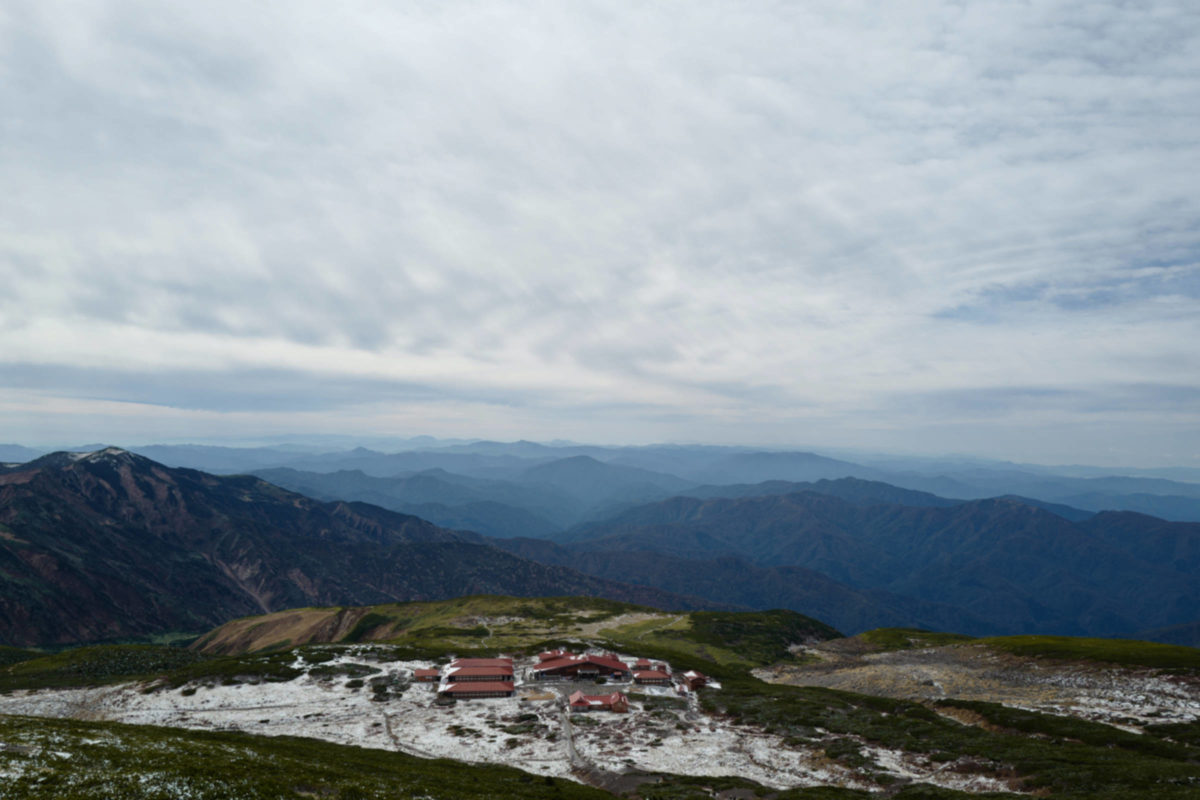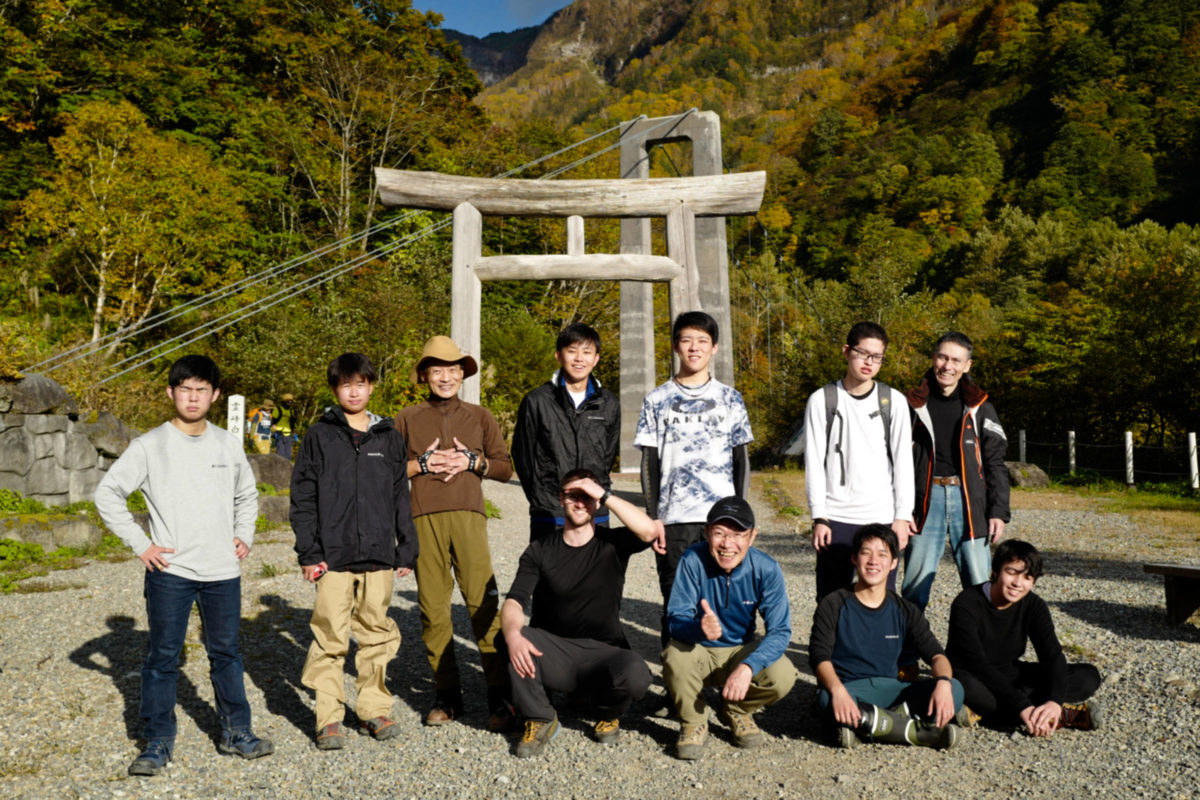Hakusanroku Journal 白山麓ジャーナル
December 20, 2021 Engineering Design IIB Projects
 Hi it's Jonathan again! Today I would like to show you the videos of the second year students talking about their Engineering Design projects. As you saw in the previous entry, students at ICT learn to find problems in their surroundings and create solutions to resolve them. The first year students focus on the Hakusanroku Campus, and the second year students take it a step further by moving their attention to the local community. Hakusanroku is a rural area in Ishikawa prefecture with problems you would expect from a village away from major cities; aging and decreasing population to name a few. The students were divided into three groups, each with a different theme.
Hi it's Jonathan again! Today I would like to show you the videos of the second year students talking about their Engineering Design projects. As you saw in the previous entry, students at ICT learn to find problems in their surroundings and create solutions to resolve them. The first year students focus on the Hakusanroku Campus, and the second year students take it a step further by moving their attention to the local community. Hakusanroku is a rural area in Ishikawa prefecture with problems you would expect from a village away from major cities; aging and decreasing population to name a few. The students were divided into three groups, each with a different theme.
Agri-tech
The "Agri-tech" group focused on the growing problem of damage to crops by wild animals. Hakusanroku is home to wild boars, bears, and MANY monkeys. Locals try to protect their crops from them with electrical fences and fire crackers. However, this is becoming increasingly difficult as they grow older and fewer in number, and because monkeys quickly learn how to avoid their defenses. Seeing this, the Agri-tech group came up with a long term plan to create a automatic defense system against the animal forces. Their goal for this year was to create a system that can detect monkeys in the wild using AI. As you can see in their presentation, they took thousands of pictures of monkeys, which they "fed" to the AI until it could steadily achieved a recognition rate of 65~90%. Since monkey attacks to crops is a nation-wide problem and their are no current known projects working on this topic, this team may be the pioneers on solving a major issue all over Japan. You can read more details about their project here.
Agri-business
The "Agri-business" group turned their eyes to the decreasing population and shrinking economy. Hakusanroku is in a negative spiral, in which younger generations leave for larger cities which in turn leads to less demand and job opportunities for them. The group challenged themselves with designing and operating a business model of growing and selling Hakusanroku branded sweet potatoes. They planted, harvested, packaged and sold their sweet potatoes "Kanjyuku-Beni-Haruka". You can read more about their project here. In their presentation, they went into more detail on how much money they made (or lost) and what changes are necessary to actually create a sustainable business model in Hakusanroku.
Nigyo-Jyoruri
Nigyo-Jyorui is a traditional puppet show dating back more that 300 years ago. The people of Higashi-futakuchi district have continued to preform it every year. However, their numbers are also dwindling and they have few young performers that serve as potential successors. You can read about the history of Ningyo-Jyoruri in this article. The group was limited on what they could actually do due to COVID-19, especially because this year's performance was canceled. In there presentation, they explained that after exhausting ideas such as collaborating with popular anime or creating online videos to spread the culture, they finally decided to appeal to the local children of Hakurei Elementary and Junior High School by hosting a doll making event at ICT. In the event, kids could use a 3D scanner and 3D printer to create Nigyo-Jyoruri dolls using their own scanned faces. Potentially, this would benefit both sides by introducing kids to ICT's technology and Ningyo-Jyoruri culture.
This final presentation was a great display of how much the second year students have grown. All their hard work has paid off by increasing not only their technological skills, but teamwork, time management, presentation skills, and English skills.
Jonathan
You can see their presentations in the videos below. (The first two are in Japanese and last one is in English)
こんにちは、ジョナサンです!今日は2年生のエンジニアリングデザインの最終発表の様子を動画でお見せしたいと思います。その前に2年生のエンジニアリングデザインのプロジェクトについて。前回の記事でも書いたように、国際高専では身の回りにある課題を発見し、解決する授業がエンジニアリングデザインです。1年生はこの白山麓キャンパス、2年生は一歩進んで周辺地域の課題発見解決に臨みます。石川県の南に位置する白山麓は農村地特有の人口減少や若者の離脱などの課題を抱えています。学生たちは3つのグループに分かれてこれらの課題に取り組みました。
アグリテック班
アグリテック班は白山麓の獣害の問題に着目しました。白山麓では猿による農作物への被害が年々深刻化しています。地元住民は電気柵や花火などで対抗していますが、猿の学習能力の高さは脅威であり、住人の高齢化による体力減衰や人手不足の影響で劣勢を強いられています。これに対し、アグリテック班は獣害対策としてAIの力を借りようと考えました。長期的には自動で動物を発見し、畑から守ってくれるシステムを開発設置することが目標です。今年の2年生の目標はAIを使って猿を認識するシステムの開発でした。発表で学生は、猿の写真を何千枚もAIに「食べさせる」ことによって、65~90%もの高い認識率を達成できたと語りました。猿被害は全国的な問題で、このプロジェクトが成功すれば、日本初の自動猿撃退システムになる可能性を秘めています。アグリテックの活動についてもっと詳しく知りたい場合はこちらの記事をご覧ください。
アグリビジネス班
アグリビジネス班は人口減少と地元経済の関係に着目しました。白山麓は高齢化によって経済が後退し、それがさらなる若者の流失を招いている負のスパイラルに見舞われています。学生は白山麓で持続可能なビジネスモデルを確立することを目標に、白山麓ブランドのさつまいもを栽培・販売することに決めました。「甘熟紅はるか」と名付けられたさつまいもは学生たちが自ら種植え、草むしり、収穫、仕分け、ラベル作り、梱包、出荷をこなしました。このプロジェクトについてもっと知りたい場合はこちらの記事をご覧ください。発表の中で学生は収入と支出を述べ、継続的なビジネスモデルを形成するための条件を事細かに説明しました。
人形浄瑠璃
東二口地区で毎年行われている文弥人形浄瑠璃は300年以上の歴史がある伝統文芸です。しかし、最近では保存会会員も減り、後継者不足に悩まされています。人形浄瑠璃の歴史について詳しく知りたい方はこちらの記事をご覧ください。難しい課題な上、今年はコロナ禍の影響で公演が中止となってしまったため、活動範囲は限られてしまいました。発表の中で学生は人気アニメとのコラボレーションやインターネット動画サイトを使ったプロモーションなどのアイデア出しをするも実らず、視点を変えて後継者不足の課題に集中することを決めました。そのために国際高専の強みを活かして、地元の白嶺小中学校の子供たちを対象に人形作りイベントを開催することにしました。このイベントでは3Dスキャナーと3Dプリンターを使って子供たち自身の顔の人形を作ることができました。このイベントによって地元の子供たちが将来的には人形浄瑠璃の後継者を見つけるだけではなく、国際高専で学べる工学にも興味を持ってもらおうという意図が含まれています。
全グループの発表を見て、1年間の成長を実感できる内容でした。技術力に加え、チームワーク、時間管理、発表能力、英語力が、様々な課題を乗り越えて成長したと感じました。
ジョナサン
発表の様子は動画をご覧ください。
January 18, 2021 Engineering Design 1B Projects
 Hi, it's Jonathan, the camera man. Today I would like to give a report about the final presentations for the first year students' Engineering Design 1B projects held on January 16. Engineering Design is the class in which students design solutions for problems within their local community. Students were divided into three groups and given the task of creating a prototype that helped their respective target group. The three targets were the security staff, cleaning staff, and onsen staff. Also, the prototype must be made using LEGO EV3 and biomimicry, which is the method of implementing characteristics of nature or animals into your project. Each group interviewed their target to understand their needs before deciding on what to create.
Hi, it's Jonathan, the camera man. Today I would like to give a report about the final presentations for the first year students' Engineering Design 1B projects held on January 16. Engineering Design is the class in which students design solutions for problems within their local community. Students were divided into three groups and given the task of creating a prototype that helped their respective target group. The three targets were the security staff, cleaning staff, and onsen staff. Also, the prototype must be made using LEGO EV3 and biomimicry, which is the method of implementing characteristics of nature or animals into your project. Each group interviewed their target to understand their needs before deciding on what to create.
In the beginning of this semester, the students started by learning how to use LEGO EV3. LEGO EV3 is a robotic kit that you can customize and program. This took several weeks as the students learned how to build the blocks and gears, and program the robot to move as intended. They were given multiple courses that the robots had to complete. There was much trial and error as the students learned the fundamentals of robot programming. The pictures above were taken last October.
These are pictures of students a few days before the final presentation. Students learned how difficult time management is the hard way. All teams had to crunch after school to meet the deadline.
Security Staff Group "Sanitaika"
The security staff group learned from their interview that the guards had trouble noticing when visitors came into the building because they do not have a direct view of the entrance from their office. To solve this problem, the students designed a machine that detects and notifies the guards whenever the automatic doors open. The animal they mimicked was the firefly squid (famous in Toyama prefecture). The machine lights up to tell visitors where to go and also has an automatic hand sanitizer function. The students emphasized in their presentation that the wished to add a "fun element" to liven up the security staff's working environment. In this case, they designed a rotating mechanism that shows a man running through trees of the four seasons each time the sensor detects a visitor.
Cleaning Staff Group "Gommit"
The group that targeted the Hakusanroku Campus cleaning staff concluded from their interview that they should show more gratitude to the cleaning staff and make their jobs more enjoyable. To achieve this, they designed a machine attached to one of the garbage bins. They installed a sensor that detects how many times trash is thrown into the bin and a fan that opens depending on how full the garbage bin is. This fan is the group's biomimicry idea taken from the peacock. This is a visual indication of how full the garbage bin is. However, this is not the only function. When opening the garbage bin to remove the garbage bag, one of three stuffed animals will appear and make a sound. The animals and sounds are random so that the cleaning staff can enjoy this feature each time they use it.
Onsen Staff Group "EV8"
The final group was the most aesthetically pleasing onsen staff group. Hakusanroku Campus has an onsen facility and this groups goal was to create something that would benefit the staff there. After interviewing the maneger and staff, the group learned that they desired to know if and how much the customers enjoyed their experience. To fulfill this, the group designed a machine that lets customers easily give their feedback. There are four sensors on the front of the base, which represent "Great" to "bad". (they plan to add smiley faces in the final version) Feedback is recorded on a memory card, so the onsen staff can view and keep track of the results. Also, a flower will bloom every five times a customer gives positive feedback. Since this machine will be installed in the onsen, students focused on aesthetics as well. They created two dioramas representing the seasons of Hakusanroku's landscape and gave the whole box a clean look.
All three groups' ideas and prototypes were unique and fascinating. They were well thought out and I could see how they improved their project from their first prototype to the second and final version. This is also why I could not help seeing room for improvement. The presentations were in English, which the Japanese students have still to master. Still, they could have been much better with practice. Also, each team needed to work until the last moment; which was a shame because they were all great! I am definitely planning to use this day as a mental waypoint to look back on and see how much they have grown in the future.
Jonathan
こんにちは、カメラマンのジョナサンです。今日は1月16日に行われた1年生のエンジニアリングデザインIBのプロジェクト最終発表について書きたいと思います。エンジニアリングデザインは学生たちが身の回りの課題を発見し、解決策を創出する授業です。今回は3つのグループに分けられ、それぞれ警備員、清掃員、温泉スタッフの3つの対象に向けた課題解決のプロトタイプ製作を目標としました。プロトタイプはLEGO EV3で作られ、自然界からヒントを得るバイオミミクリーをプロジェクトに取り組まなければなりません。各グループはそれぞれの対象顧客へのインタビューから活動を開始しました。
学期はじめ、1年生はLEGO EV3について勉強しました。LEGO EV3はカスタマイズ性があり、プログラミングで動かすことのできるロボットのキットです。学生たちは数週間かけてブロックの組み合わせ方や意図通りにロボットを動かすプログラミングの練習をしました。複数の課題やコースが用意され、学生たちは試行錯誤しながらクリアしていきました。写真は去年の10月に撮った時の様子です。
次の写真は最終発表が行われる1月16日の前日までプロトタイプ製作に励む学生たちの様子です。どれほど時間管理に気を配ったつもりでも、ギリギリになってしまう経験は皆さんもあるのではないでしょうか。ここでは、放課後に残業する学生たちの姿がありました。
警備員グループ「Sanitaika」
警備員グループはインタビューの中で、玄関が警備員室から死角になっているせいで、訪問者に気付かないことがある課題を知りました。これを解決するために自動ドアが開いた時に知らせてくれる装置を考えました。取り入れたバイオミミクリーは富山県で有名なホタルイカで、青く光って訪問者に場所を知らせる機能があります。また、センサーが反応して消毒液が出る機能もあります。学生たちはこれに加えて警備員たちの仕事を楽しくする要素を加えたかったと述べ、ただ光や音で知らせるのはではなく、四つの季節を現した木々が描かれた丸いアクリル板を製作し、訪問者が来た時に回転して中央の人間が季節の中を走っているように見せる遊びを加えました。
清掃員グループ「Gommit」
白山麓キャンパスの清掃員を対象にしたグループはインタビューをして、感謝の気持ちをより伝えるとともに、仕事を楽しくするプロジェクトを考えました。思いついたのはごみ箱に取り付ける装置です。内部のセンサーがごみを感知し、投げ込まれた数を数えます。それに合わせてうしろの扇子が開いてゆき、15回で満開になります。これによって清掃員は確認せずともごみの溜まり具合がわかるという仕組みです。扇子は孔雀から取ったバイオミミクリーのアイデアです。しかし、このロボットの機能はこれだけではありません。ごみ袋を取り出すために扉を開けると、動物の声とともにぬいぐるみの顔が現れるようになっています。しかも、動物は猫、猿、ひよこの3種類あり、どの声と動物が出現するかはランダムとなっていて、清掃員が長く楽しめる配慮がされています。
温泉スタッフグループ「EV8」
最後のグループは見た目も美しい温泉スタッフグループでした。白山麓キャンパスには温泉施設が隣接されています。スタッフに話を聞くと、お客さんの感想をもっと知りたがっていることがわかりました。これを叶えるために学生たちは温泉に入った人が簡単に感想のフィードバックができる装置を製作しました。装置の正面には四つのセンサーがあり、それぞれ「とても良かった」~「良くなかった」の感想レベルを表しています。(最終版にはニコニコ顔などが表示される予定だそうです)お客さんの感想はメモリーカードにデータ化され、パソコンに取り込むことによって確認したり、記録したりすることができます。また、良い感想を5回検知すると、モーターが回転して上部のジオラマに花が咲くようになっています。そして、ほかのグループと違って公共の場に置くため、外観にも力を入れました。上部には白山麓の季節を現した2つのジオラマがあり、箱自体もすっきりとした見た目になっています。
いずれのプロジェクトも個性的で、素晴らしいものでした。インタビューをしてからじっくり考え、最初のプロトタイプから行った改善点がよく見えました。もちろん、成長の余地もあったように思えました。発表は英語で行う必要があったとはいえ、練習次第ではもっと上達すると感じました。また、発表直前まで追い込み作業をしているグループが目立ち、時間管理の難しさを痛感したはずです。素晴らしいプロジェクトだったからこそ、きっと悔しい思いと思います。今後、彼らの5年間の成長を見守っていく中で、今回の発表をひとつの懐かしい比較点として心に留めておこうと思います。
ジョナサン
December 23, 2020 The story of the monkey project

 Hello everyone, Welcome back to the journey (^o^)//. As you follow Hakusanroku Journal, The group of second-year students has been doing in Engineering Design class. Some of the students planted sweet potatoes in the garden across the campus. Unfortunately, The monkey gangsters stole the lovely sweet potatoes from the students.
Hello everyone, Welcome back to the journey (^o^)//. As you follow Hakusanroku Journal, The group of second-year students has been doing in Engineering Design class. Some of the students planted sweet potatoes in the garden across the campus. Unfortunately, The monkey gangsters stole the lovely sweet potatoes from the students.
Following this journal : https://www.ict-kanazawa.ac.jp/journal/12370/
皆さん、こんにちは。旅路へおかえりなさい(^o^)// 白山麓ジャーナルを普段から読んでいる方は、2年生のグループによるエンジニアリングデザインの活動について読んだことがあるでしょう。キャンパスの向かいの畑にさつまいもを植えた学生のグループがいます。しかし、残念ながら愛情を込めたさつまいもは猿のギャングによって盗まれてしまいました。

However, The “Agri-tech” group decided to create a system that can detect the monkey by using Artificial Intelligence (AI). They went to Ishikawaken Shinrin Koen Forest Zoo in Tsubata-machi and took photos of monkeys for teaching a machine (Machine Learning : ML) to recognize the monkey.
これを受けて、「アグリテック班」は人工知能(AI)を利用して猿を検知できるシステムの制作を決意しました。津幡町にある石川県森林公園の動物園で猿の写真を撮って、機械に学習させました。(機械学習=ML)
In my part, I have been used to Machine Learning before. Then, I suggest the student use the Jetson nano development board for their project. Jetson nano is a Small, Powerful computer for makers, learners, and developers. It’s easy to get started building practical AI Applications.
私は以前にも機械学習をしたことがありましたので、学生たちにJetson nano development boardを使うように勧めました。Jetson nanoはエンジニア、学生、開発者用に作られた小型ながらパワフルなコンピューターです。AIを使った実用的なアプリケーションを初めて作る人に適しています。
After the students took a Thousand monkey photos, We had to supervise the machine to recognize the monkey. We start designing the system and labeling all the images where the monkeys are in the photos.
猿の写真を千枚撮ったら、次は機械が猿を見分けられるように手助けしなければなりませんでした。ここではシステムを設計して写真の中の猿にラベルを付けました。
The students spend a couple of weeks training a model that uses 100 images, 200 images, 300 images, and increasing to 1500 images and So on.
学生たちは数週間かけて、100枚、200枚、300枚…1500枚…と枚数を増やしていきました。

Finally, We got a model that is high accuracy and satisfied.
ようやく満足できる高い認識率を達成できました。
We went back to Forest park again and tested our machine. As you can see in the video, The system can detect real-time and count the monkeys by using a USB camera.
完成したモデルを持って森林公園に戻り、試験を行いました。下の動画で見てわかるように、システムがUSBカメラに映った猿をリアルタイムで認識して数えています。
In the future, The students plan to make a box cover the device and install the machine in their garden to protect our sweet potatoes from the monkey.
将来的にはデバイスを収納する箱を作って、畑に設置してさつまいもを猿から守りたいです。
Apirak Sang-ngenchai
アピラク・サンゲンチャイ
+++
電気学会 U-21 学生研究発表会で最優秀賞受賞
学生3名はSDGsをテーマにこの研究を電気学会「U-21学生研究発表会」で発表し、見事、最優秀賞を受賞しました。詳しくはこちら。
December 21, 2020
 Hello everyone, Jomkit here with my very first journal entry! It’s been a few weeks since I started working here, but the beauty of nature still astounds me. I am not much for photography, but when I see the landscape surrounding us I can’t help but try and capture it on my phone. I’m no stranger to towering mountain ranges and trees that carpet them, but in my hometown of Portland, Maine, I would need to drive 45 minutes out of the city to see such magnificence. Here, all it takes is one glance out the window and I’m faced with a visage painted by the turning of the seasons.
Hello everyone, Jomkit here with my very first journal entry! It’s been a few weeks since I started working here, but the beauty of nature still astounds me. I am not much for photography, but when I see the landscape surrounding us I can’t help but try and capture it on my phone. I’m no stranger to towering mountain ranges and trees that carpet them, but in my hometown of Portland, Maine, I would need to drive 45 minutes out of the city to see such magnificence. Here, all it takes is one glance out the window and I’m faced with a visage painted by the turning of the seasons.
With that being said, the Hakusan area is much quieter than what I’m used to. Growing up I lived in the city next to a hospital, so there were many nights where I fell asleep in conditions some people would consider too noisy to think. But I’m getting used to the calmness of the rural area, and there’s certainly a few sights to see. One thing that has helped me deal with homesickness is walking to the nearby coffee shops, such as Kijitora or Koubou. I absolutely love trying new coffee, and neither of these places have disappointed. Kijitora’s style is delightfully reminiscent of the cafes in my hometown, and they have a fantastic selection of espresso drinks. Koubou on the other hand may only offer a limited selection of drink styles, but their cozy seats and warm atmosphere really makes you lose track of time. The homemade baked goods are likewise delightful. I’ve heard the coffee scene in Ishikawa is bustling, so I look forward to getting to know the specialties of local shops and roasters.
Jomkit Jujaroen
はじめまして。ジョムキット先生の最初の白山麓ジャーナルですよ!ここで働き始めてから数週間が経ちましたが、いまだに周辺の自然の美しさに驚かされます。写真は得意じゃありませんが、周りの地形を見るとスマホのカメラ機能で捉えようとしたくなります。そびえたつ山麓や生い茂る森林は私の故郷のメーン州のポートランドにもあるのですが、見るためには市外へ45分は運転しないといけません。ここでは窓の外をのぞくだけで季節に彩られた風景画が目に飛び込んできます。
それはそうと、白山麓は故郷よりずっと静かでもあります。町中の病院の隣の家に生まれ育った私は、人によってはとても眠れないような光と騒音の中眠りにつくことに慣れています。しかし、人里離れたここの静けさに馴染んできました。ホームシックを紛らわせるためによくしているのはキジトラコーヒー研究所や珈琲KOUBOUなどのカフェまで散歩することです。新しいコーヒーを試すのは大好きで、いずれの店も納得の美味しさです。キジトラは故郷のコーヒーを思い出させてくれる素敵な味ですし、エスプレッソの種類が豊富です。KOUBOUは飲み方のバリエーションこそ少ないですが、温かみのある雰囲気が時間を忘れさせてくれます。手作りの焼き菓子も最高です。石川県はコーヒーに熱い県と聞いていますので、地元の店やロースターを回るのが楽しみです。
ジョムキット・ジュジャロエン
December 14, 2020 Experiencing the Fall Scenery
 Hello everyone! My name is Brandon Wohlfarth and I just started teaching here at ICT, so this is my first Hakusanroku Journal entry. Since arriving at the Hakusanroku campus I have been blown away by the wonderful scenery surrounding campus. The mountains reaching up towards the sky, the rich reds and browns that mark the fall season, have all impressed me.
Hello everyone! My name is Brandon Wohlfarth and I just started teaching here at ICT, so this is my first Hakusanroku Journal entry. Since arriving at the Hakusanroku campus I have been blown away by the wonderful scenery surrounding campus. The mountains reaching up towards the sky, the rich reds and browns that mark the fall season, have all impressed me.
The natural landscape of the Hakusanroku campus is a stark contrast from many of the locations that I have lived in the United States. I attended Rose-Hulman Institute of Technology located in Terre Haute, Indiana where I received both my undergraduate and master’s degree. While I love Indiana, unfortunately the scenery only consisted of flat land used primarily for agriculture. This made outdoor activities such as hiking much less enjoyable. The difference between these two locations is truly like comparing night and day, completely different. After the winter, I am looking forward to being able to hike and explore the various trails in the Hakusan area.
I have been lucky so far that the weather has been pleasant so that I can still take the opportunity to enjoy nature before the snow and cold comes in. I have enjoyed walking around the Hakusanroku campus and the surrounding area. I am excited to see how the natural landscape surrounding us changes as the seasons progress, and in what other ways it may differ from what I have experienced in the past. Below are some of the pictures of the surrounding area that I have taken so far. I am not the greatest photographer so bear with me. Over the last few weeks it has been wonderful meeting the students, faculty, and staff members here at ICT. I look forward to working with everyone!
Brandon Wohlfarth
はじめまして!国際高専に着任したばかりのブランドン・ウォルファースと申します。これが最初の白山麓ジャーナルになります。白山麓キャンパスに着いてからというもの、周辺の美しい景色にただただ圧倒されています。山が空へ伸びてゆき、秋を彩る紅や茶色に染まっています。
白山麓キャンパスの周りの自然はアメリカで住んでいた場所とは大きく違います。私はインディアナ州テレ・ホートにあるローズハルマン工科大学で学士と修士号を取りました。インディアナ州の風景も大好きですが、農業に使われている平地がほとんどです。これによりハイキングのようなアウトドアな遊びに適していません。白山麓キャンパスと比べるとその違いは明らかです。暖かくなったら白山のハイキングコースを探索するのが楽しみです。
それでも良い天気が続いているおかげで、寒くなって雪が降る前に自然を楽しむチャンスがありました。これまでは白山麓キャンパス周辺を散歩して楽しんでいます。季節が進む中で、どんな風に景色が変わるのか、そして私が過去に住んだ土地とどう違うのか体験するのが楽しみです。いくつか撮った周辺の写真を載せておきます。あまり写真は得意じゃないので許してくださいね。ここ数週間は国際高専の学生と教職員に会える楽しい時期でした。皆さんと一緒にお仕事するのが楽しみです!
ブランド ウォルファース
December 7, 2020 JOES-ICTオンライン体験型ワークショップ
 こんにちは、ジョナサンです。2020年11月29日(日)、JOES-ICTオンライン体験型ワークショップが白山麓キャンパスで開催されました。JOES(海外子女教育振興財団)の小中学生を本校に呼んだサマーワークショップを毎年夏に行っていますが、今年はコロナ禍で中止となったため、オンラインでの代替イベントを開催する形となりました。
こんにちは、ジョナサンです。2020年11月29日(日)、JOES-ICTオンライン体験型ワークショップが白山麓キャンパスで開催されました。JOES(海外子女教育振興財団)の小中学生を本校に呼んだサマーワークショップを毎年夏に行っていますが、今年はコロナ禍で中止となったため、オンラインでの代替イベントを開催する形となりました。
イベントは13時に開始され、参加した小学生27名がPCやスマートフォンでログインしました。双方のあいさつと、国際高専の簡単な紹介ビデオのあと、化学を担当するナグワ先生と数学を担当するアラー先生によるワークショップが始まりました。第1部は「Chem-melody」と題され、10円玉と1円玉を塩水につけてスピーカーから音楽を流すという実験で電流の仕組みについて解説しました。クイズも出題され、参加者はZOOMのアンケート機能を使って回答しました。
第2部は「DIY実験 フルーツバッテリー制作」と題され、事前に準備をしていただいたレモン、バナナ、トマトなどのフルーツに刺した様々な金属の釘をケーブルでつないでLEDランプが点灯するかを実験しました。参加者はZOOMのビデオ機能で手元を映して作業をし、ナグワ先生とアラー先生はその様子を見ながら指示を出したり、質問に答えたりしました。映像を見ていると子供たちは待ちきれない様子で、説明を聞くや否や、準備したフルーツにケーブルをつないだり、点灯したLEDランプをカメラにかざして見せたりしていました。第3部の「Interactive Computer Simulation」ではオンライン上で回路を組めるブラウザソフトでオリジナルの回路を作って、スクリーンショットをチャット欄に共有しました。個性的な回路がたくさんあり、ナグワ先生は参加者たちの積極性に感激している様子でした。
オンラインという形になりましたが、ワークショップを開催できてよかったです。来年は対面になるのか、同じくオンライン開催になるかわかりませんが、楽しみにしています。
ジョナサン
Hi, it's Jonathan, the camera man. On November 29 (Sun), 2020, the JOES-ICT Online Workshop was held at the Hakusanroku Campus. We host a summer workshop with Joes (Japan Overseas Educational Services) students every year. However, this year it was cancelled due to the COVID-19 situation, and an online event was created instead.
The online workshop began at one in the afternoon and 27 elementary students logged in from their home. After some opening words from both sides and a short introductory video about ICT, Nagwa sensei and Alaa sensei (in charge of chemistry and math respectively) started the workshop. The first part was titled "Chem-melody." First, Nagwa sensei gave a lecture about how electricity works. Then, she connected 10 yen and 1 yen coins to a speaker and music chip before putting them in salt water; displaying that electrons were in fact traveling through the circuit as music came out of the speaker. There were quiz questions during the experiment which the participating students answered using Zoom's survey function.
In the second part of the workshop, titled "DIY Experiment Fruit Battery Making", Nagwa sensei showed the participants how to make a battery using fruits, such as lemons, bananas and tomatoes. The fruits were connected to a LED lamp via cables and nails made of different metal. Participants had prepared these items in advance and apparently could not wait to do the experiment because we could see them starting even as Nagwa sensei was still giving the instructions. Nagwa sensei and Alaa sensei watched their progress and answered any questions the students had. In the third part, "Interactive Computer Simulation", participants created an original circuit using a browser software, took screenshots of their work and posted it in chat. There were many creative circuits and Nagwa sensei expressed her joy for their enthusiasm.
I'm happy that we were able to continue the tradition of this relationship with JOES, even if it wasn't in the flesh. Hopefully the situation will be more favorable next year.
Jonathan
December 1, 2020 Rat Dissection
 Hello everyone! Today, I would like to write about an interesting experiment that second grade students have done in biology class here at ICT. Ever since the beginning of this school offering biology classes at Hakusanroku campus, I have been ordering the necessary equipment to eventually be able to do a rat dissection. After some time, we could finally realize this on November 19th 2020! This marked the first time in this school’s history to do such an experiment.
Hello everyone! Today, I would like to write about an interesting experiment that second grade students have done in biology class here at ICT. Ever since the beginning of this school offering biology classes at Hakusanroku campus, I have been ordering the necessary equipment to eventually be able to do a rat dissection. After some time, we could finally realize this on November 19th 2020! This marked the first time in this school’s history to do such an experiment.
The objectives of the experiment were twofold. First, to get students to familiarize themselves with the different dissection instruments and second, to observe the different mammal organs and organ systems that the students have studied in biology class with their own eyes.
The class began with an explanation of the objectives, the safety measures, the description of the dissection instruments and the description of the procedure. A lot of emphasis was put on the safety measures since students would be working with sharp instruments and live tissues and organs. After the explanations, I proceeded to do a demo dissection so that the students could see the flow of the dissection. Following that, the students carried out the dissection. I offered them to be in pairs if some were not comfortable doing the dissection alone, but most of them surprisingly wanted to do it alone and have one rat each.
It was nice to hear the positive comments and the positive reactions that students had during the experiment when they could see with their own eyes the theory that they have learned in class. After students had finished the main part of the dissection, they were required to call a teacher and identify specific organs from a list that was provided to them. Once they had successfully completed that task, they were free to explore more of the rat or they could finish up and clean up their space.
Overall, I was very pleased with how the class went and how the students approached the experiment with a sense of maturity and interest. We will be sure to repeat this experiment next year as well!
Jason de Tilly
*The pictures have been cropped.
※写真はトリミングしてあります。
皆さん、こんにちは!今日は生物の授業で2年生が行った刺激的な実験について書きたいと思います。白山麓キャンパスで生物の授業が誕生した日から、ねずみの解剖に必要な器具を注文して準備していました。そして令和2年11月19日、ようやく実現できました!金沢高専を含めた国際高専の歴史において初となる記念すべき解剖実験です。
解剖実験の目標は2つです。ひとつは様々な器具に使い慣れること、もうひとつは生物の授業で習った哺乳類の臓器や器官系を自分の目で観察することです。
はじめに、目標、安全事項、解剖器具と工程の解説をしました。切れ味が鋭い器具やねずみの組織と器官を取り扱うため、安全面への配慮が特に強調されました。説明のあとは解剖の流れを学生に見せるために見本を見せました。本番の前に、苦手な学生のためにペアになっても良いと伝えましたが、驚いたことにほとんどの学生はひとりで解剖したいと申し出たのです。
授業で学んだ内容を実際に目の当たりにしてポジティブな反応や発言をする学生の姿を見て嬉しくなりました。解剖でねずみを開いたあと、先生を呼んでリストに載った臓器をすべて識別する課題がありました。これに合格したあとはねずみの体内を自由に観察して、片付けて終了となりました。
興味を持ってひたむきに解剖に取り組む学生の姿勢がとても好印象で、とても良い実験になりました。来年も解剖実験が行えるように準備します!
ジェイソン・デ・ツィリー
November 30, 2020 愛・AIいもプロジェクト
 カメラマンのジョナサンです!今日は2年生の「エンジニアリングデザイン」の活動を紹介します。
カメラマンのジョナサンです!今日は2年生の「エンジニアリングデザイン」の活動を紹介します。
国際高専の問題発見解決型の授業、「エンジニアリングデザイン」では、学生がユーザーの視点に立って課題を明確化、解決策のアイデアを考慮しプロトタイプを作っています。今年は2年生7名が白山麓キャンパス校舎前の休耕田に着目して、「アグリテック班」「アグリビジネス班」の2つのグループに分かれて課題解決に挑みました。
昨年、課外活動の一環で、一部の学生と先生が白山麓キャンパス前にある休耕田でさつまいもを栽培しましたが、サルにより収穫のほとんどを奪われてしまいました。金沢工業大学と連携して、大学の研究室で試作された獣害対策ロボットを試しましたが、風などで動きのある自然を背景にした場合、動物の認識率が低いことがわかりました。そこで「アグリテック班」はAIを使って自然の中でもサルを認識できるシステムの開発を行うことにしました。後学期はプログラム開発を進め、11月に入ってからは津幡町にある石川県森林公園で、ニホンザルの写真を7,000枚撮ってシステムに学習させて認識の精度を高めました。これらの活動は11月13日(金)にNHK金沢放送局の「かがのとイブニング」にも取り上げられました。農作物の被害は全国的な課題となっており、今後は畑にサルが侵入した際に、所有者のスマートフォンに知らせるシステムの構築を目標にしています。
「アグリビジネス班」の学生たちは地域活性化を図るために「愛・AIいもプロジェクト」を4月に発足し、休耕田にさつまいも「紅はるか」の植え付け、草むしり、収穫を自ら行いました。今年は電気柵を使ってサル対策をしたおかげで栽培した芋の9割以上を収穫できました。学生たちは糖度計を使って収穫した紅はるかの糖度を計測したところ44度という非常に高い数値を確認し、焼き芋にするとねっとりと甘く、大変美味しいことがわかりました。学生たちは芋を洗ってから大きさごとに分別し、オリジナルデザインのラベルを貼って販売用にパッケージングを行いました。白山麓発のブランド化を目指して「甘熟紅はるか」と名付けられたこれらのさつまいもは道の駅「瀬女」や地元のスーパーで販売したところ、すぐに在庫がなくなるほどの人気でした。
次年度以降は、「アグリテック班」が開発した獣害対策システムの完成度向上を計りながらブランドのさつまいもの生産販売を地域と協力しながら推進する予定です。
ジョナサン
Hi, its Jonathan the cameraman. Today, I will give a report on what some of the second year students have been doing in "Engineering Design" class.
ICT's "Engineering Design" is a course in which students find problems in their community or society by interviewing people and creating prototypes that solve them. Seven of this year's second year students decided to focus on the unused fields across the street from the Hakusanroku Campus and start the "Ai Ai Imo Project", which consists of two groups: "Agri-tech" and "Agri-business".
Last year, some students planted sweet potatoes in the same field as part of their club activity. Despite their hard efforts, most of the potatoes were dug up and eaten by monkeys. They partnered with Kanazawa Institute of Technology to test a wild animal defense robot. However, it proved unable to detect animals when set in a wild environment due to wind moving the plants in the background. Learning this, the "Agri-tech" group decided to create a system that detects monkeys in the wild using AI. The actual construction of the system started this semester. In November, they traveled to the national park in Tsubata-machi and took over 7,000 pictures of the monkeys there to increase the accuracy of the AI. These activities were even featured on national television "Kaga-noto Evening" on November 13. Damage to crops by wild animals is a serious problem in Japan and the group hopes to develop a system that can detect monkeys entering a field and notify the owner via their smartphone.
The "Agri-business" group started the "Ai Ai Imo Project" in April. Their goal was to utilize the unused field to grow and sell sweet potatoes. To not repeat the same mistake as last year, this year's second year students built an electric fence around the patch to shut out the monkeys. Thanks to this and some quick decisions, they were able to harvest over 90% of the sweet potatoes. Students measured the sugar content of the potatoes, which turned out to be a remarkably high 44 degrees. After roasting and eating the sweet potatoes, we confirmed that they were rich, sweet and delicious. The students rinsed and separated the sweet potatoes by size, which they then packaged and labeled. These sweet potatoes were branded "Kanjuku (sweet and ripe) beni-haruka" and were sold at the michi-no-eki "Sena" souvenir shop and local super market "Yorankaine". They were extremely popular and sold out in a couple of days.
Next year, we hope to improve the system created by the "Agri-tech" group and work with the local community to further promote the sweet potatoes to draw people to Hakusanroku.
November 24, 2020 伝統芸能に触れる
 国の重要無形文化財に登録されている白山麓地域の伝統芸能の人形浄瑠璃「でくのまわし」をテーマとしたプロジェクトを思案している2年生のグループがある。彼らは、前期授業で地域調査をはじめ、この地域ならではの価値について考えた。後期授業では、導きだした価値を活かしたプロジェクトを考えている。
国の重要無形文化財に登録されている白山麓地域の伝統芸能の人形浄瑠璃「でくのまわし」をテーマとしたプロジェクトを思案している2年生のグループがある。彼らは、前期授業で地域調査をはじめ、この地域ならではの価値について考えた。後期授業では、導きだした価値を活かしたプロジェクトを考えている。
11月15日には、徳島の浄瑠璃団体の座長として活動されているマーティン・ホルマンさんによる人形浄瑠璃講演を白山市東二口歴史民俗資料館で聞くことができた(白山市国際交流協会主催)。ちなみに以前のジャーナルにも掲載されていたが、彼らの東二口への訪問は2回目となる。今回の目的は、浄瑠璃の理解をより深める事と、学生たちが思案しているプロジェクトについて、演じる方に意見を伺うことである。
講演はホルマンさんの人形浄瑠璃に関わるきっかけや、人形の操り方、人形浄瑠璃をどのように思っているかなど、いろんな角度からお話を聞くことができた。日本人でない方が日本の伝統芸能に情熱的に関わっている姿に、感慨深いものを感じた。講演後には、東二口の演目である大職冠の一部を鑑賞した。学生は徳島の人形を動かす機会もあり、地域の演技特徴を比べながら人形浄瑠璃について深く知る機会を得た。
企画後に学生達は、ホルマンさんや東二口の方々と交流を図っていた。今回の交流を通じて得た情報、感じた事は学生達の考え出したプロジェクト案に反映され、より充実した内容になることが期待できる。
小高有普
One group of second year students have started a project targeting the local "important intangible cultural property", traditional performing art here in Hakusanroku, the puppet theatre "Deku-mawashi". In the first semester, they gathered information from the local community and evaluated its unique importance. Currently in the second semester, they are working on a project to improve its situation.
On November 15, we were able to listen to a lecture by chairman of Ningyo-joruri (traditional puppet theatre) in Tokushima prefecture, Martin Holman at the folk museum in Higashi-futakuchi, Hakusan city (the event was organized by Hakusan International Asosiation). You may have read the previous journal entry and know that it is the students second time to visit here. Our goal this time was to deepen our knowledge of Ningyo-joruri and ask the performers for feedback on the students' proposal.
Listening to the lecture by Mr. Holman, we learned how he got involved with Ningyo-joruri, how to operate the puppets, and what his opinion is about the art. It was moving to listen to a foreigner speak so passionately about Japanese traditional art. After the lecture, we watched a part of the play "Taishokukan" and students were able to touch some of the puppets from Tokushima. It was informative and interesting to compare the differences between Ishikawa and Tokushima.
After the event, students continued to gather information from Mr. Holman and the Higashi-futakuchi members. The knowledge and feedback they gathered will improve their project even further.
Arihiro Kodaka
October 20, 2020 Mt.Hakusan Climb
 こんにちは、カメラマンのジョナサンです。2020年10月18日(日)、ネイチャー&アドベンチャークラブの白山登山に同行してきました。白山は石川県と岐阜県にまたがる標高2702mの活火山で、富士山と立山と並んで日本三霊山のひとつです。ネイチャー&アドベンチャークラブでは白山登山が恒例行事となっていますが、今年は9月の予定日が台風と重なってしまって18日が最後のチャンスだったのですが、ありがたいことに天候にも恵まれて実施ができました。私たちは早朝5時に玄関前に集合し、登山口の別当出合へ移動しました。前日17日に白山の初冠雪が報道されたためか、たくさんの登山客が来ていました。
こんにちは、カメラマンのジョナサンです。2020年10月18日(日)、ネイチャー&アドベンチャークラブの白山登山に同行してきました。白山は石川県と岐阜県にまたがる標高2702mの活火山で、富士山と立山と並んで日本三霊山のひとつです。ネイチャー&アドベンチャークラブでは白山登山が恒例行事となっていますが、今年は9月の予定日が台風と重なってしまって18日が最後のチャンスだったのですが、ありがたいことに天候にも恵まれて実施ができました。私たちは早朝5時に玄関前に集合し、登山口の別当出合へ移動しました。前日17日に白山の初冠雪が報道されたためか、たくさんの登山客が来ていました。
準備ののち、6時半に登山を開始しました。早朝の空気は冷えていましたが、中飯場に到着する頃には上着を脱ぐほどに温まっていました。甚之助避難小屋付近では紅葉が始まった山々のパノラマが見られるようになり、学生たちは双眼鏡やカメラを使って眼中に収めていました。参加した学生のほとんどが初の白山登山で、苦しい時間もありましたがペースを調節したり声を掛け合いながら奮闘しました。黒ボコ岩を越えた弥陀ヶ原からはスカッと晴れた空をバックに御前峰が見えました。室堂に近づくと雪の出現とともに本格的に冷えてきました。全員防寒具を装着して最後の登りに臨みました。
室堂の先は気温が一気に氷点下に下がりました。風も強くなり、体感気温は真冬の雪山のようでした。頂上に到着した私たちを待っていたのは雪化粧がされた御前峰と、能登半島まで見渡せる澄み切った空でした。登頂時刻は11時頃でした。寒さで体力の消耗が激しかったので滞在時間が限られていましたが、学生たちは景色を見たり、叫んでみたりして石川県のてっぺんを堪能しました。室堂に戻ってからは昼食をとり、下山しました。黒ボコ岩まで戻ると気温も上がり、涼しいと思えるようになりました。別当出合に到着したのは15時半頃で、最後の集合写真を撮りました。辛かった者、余裕だった者、楽しかった者、様々でしたが全員が日常生活を離れ、普段見れない景色、できない体験をした貴重な一日となりました。
ジョナサン
Hello! It's Jonathan, the camera man. On October 18, 2020, the Nature & Adventure Club held their annual Mt. Hakusan climb. Mt. Hakusan means "white mountain" in Japanese and is located across Ishikawa prefecture and Gifu prefecture. It is 2702m high and is one of Japan's three sacred mountains along with Mt. Fuji and Mt. Tateyama. The Nature & Adventure Club was scheduled to climb Hakusan in September but this was canceled because of a typhoon. October 18 was our last chance and we were rewarded for our patience with perfect skies. We gathered at front entrance of the Hakusanroku Campus at 5 am and drove to Betto-deai, the starting point on the Ishikawa prefecture side. It just snowed for the first time this year on the day before, and the parking lot was full of climbers, possibly prompted by the news.
We began our assent around 6:30 am. It was chilly at first but warmed up as the sun came up. The leaves were beautifully colored with many reds, oranges, and yellows. After Jinnosuke Cabin, the scenery opened up and we could see the panorama of mountains surrounding Hakusan. Students enjoyed this view, some with cameras and binoculars. For most of the students, this was their first time climbing Mt. Hakusan and the going was not always easy. However, students pushed on at their own pace. After Kuroboko-iwa, we could see the white peak across from Mida-ga-hara, with a blue sky background. The temperature began to decline as we approached Murodo. There, we geared up and made the final climb to the peak, Gozen-ga-mine.
The temperature dropped below 0 degrees celsius past Murodo and wind felt like a blizzard in mid winter. When we finally reached the top around 11 am, we were greeted by a freshly coated Gozen-ga-mine and blue skies so clear that you could see Noto peninsula in the distance. We enjoyed the awesome view as long as we could bear. Some students even began shouting for the fun of it. After returning to Murodo, we all ate lunch and began our decent. Temperatures finally rose again after Kugoboko-iwa and we could appreciate to cool breeze. We arrived at Betto-deai around 3:30 pm, concluding our trip with a group photo. The students' reactions to the experience differed. Some enjoyed it, some found it easier than they expected, and some vowed to never do it again. In any case, it was an unique opportunity to see new sites and try something new.
Jonathan






















